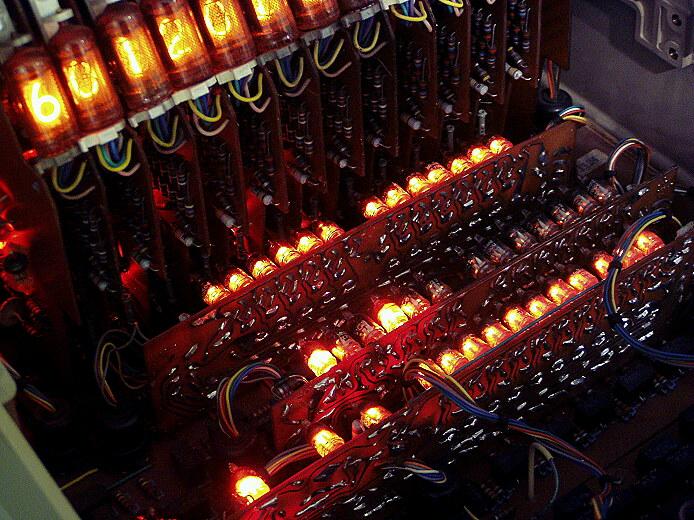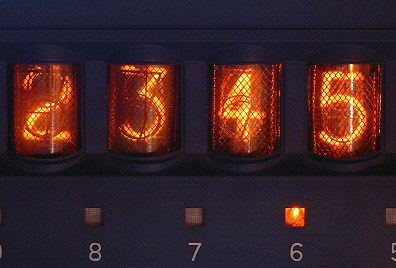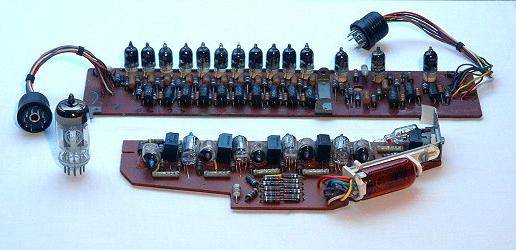Desk calculators with electron tubes
The development of electronic calculators since the 1950s is at least as interesting as the
development of broadcast engineering in the 1920/30s.
The first electronic desk calculator in the world (1962) is a real milestone. The
modern-looking monster features 188 electron tubes and belongs consequently to the first
generation of calculators. It has a wonderful glowing display. However, the
tube based computer can only perform the four basic arithmetic operations and
cost as much as a VW Beetle and an holiday trip.

Anita Mark C/VIII
The ANITA ("A New Inspiration To Arithmetik") was manufactured by BELL PUNCH Co, England. This historic calculator revolutionised computing on desktops. For the first time, you could multiply and divide without mechanics or noise. With a 3 kHz clock the device calculated ten times faster than the best contemporary mechanical calculators. Anyway, technically speaking, the device was actually obsolete in 1962. The calculator works in decimal system, just like mechanical sprocket wheel machines. It took two more years until a transistorized desk calculator (IME 84) came onto the market.

The "nightly" Anita inner life: The thyratrons glow red, flashing during calculations.

This is part of the numeric display. The gas-filled nixie tubes (glow lamp principle) came onto the marktet just in time.

The upper circuit board contains a ring counter. The gas-filled thyratrons are very small. This was the only way to place approx. 177 pieces into a manageable case. These relay tubes have only two states like mechanical relays. Additionally there are 11 vacuum tubes (ECC 81, left side) built into the calculator.
The lower circuit board is a complete counting decade with a nixie tube.